“Polishing not only enhances the appearance of metal parts; it protects the part over time and facilitates better performance. “
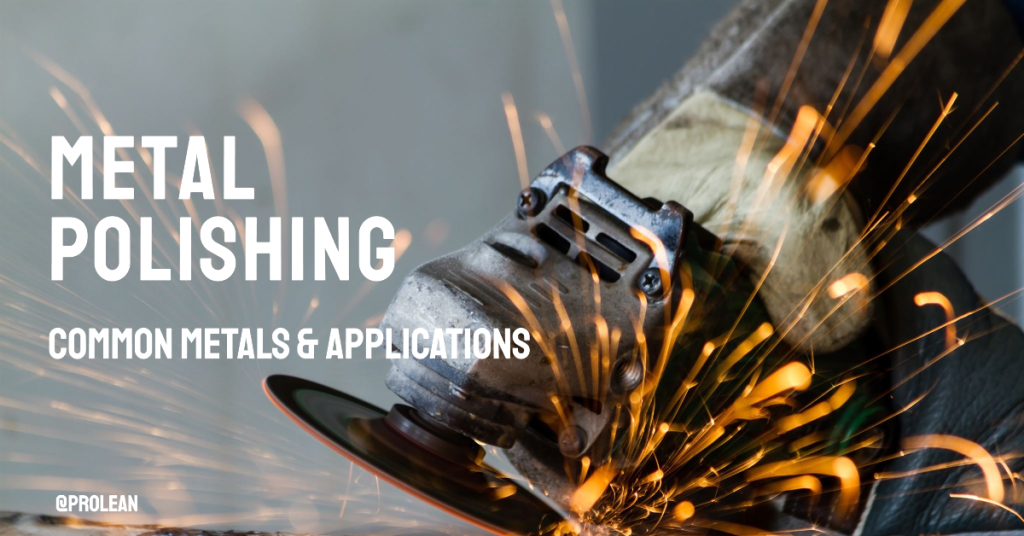
Surface finishing is vital for metallic parts’ durability and continuous operation. The rough surface can attract contamination, which leads to corrosion and erodes the surface. Metal polishing is among the effective Polishing Techniques to achieve a shiny, reflective, and defect-free surface. So, this is widely used in automotive, architectural, aerospace, and other various industrial applications.
This article will discuss the surface polishing of different metals, including the metal polishing process, pros & cons, and application examples.
What is Metal Polishing?
It is a surface-finishing method that uses various abrasives( from coarse to fine) to produce a shiny and reflective surface. The primary purpose of metal polishing is to remove the surface imperfections created in the manufacturing processes. So, abrasives with different sizes of grains( from large to small) are applied on the metal surface one by one. Meanwhile, the buffing process at the end makes the surface reflective.
Furthermore, a lot of metals can be surface polished with the use of the correct polishing compound;
- Stainless Steel
- Aluminum
- Titanium
- Copper
- Brass
The Polishing effects on these metals increase their corrosion resistance, durability, performance, and aesthetic appeal.
Try Prolean Now!
The Metal Polishing Process
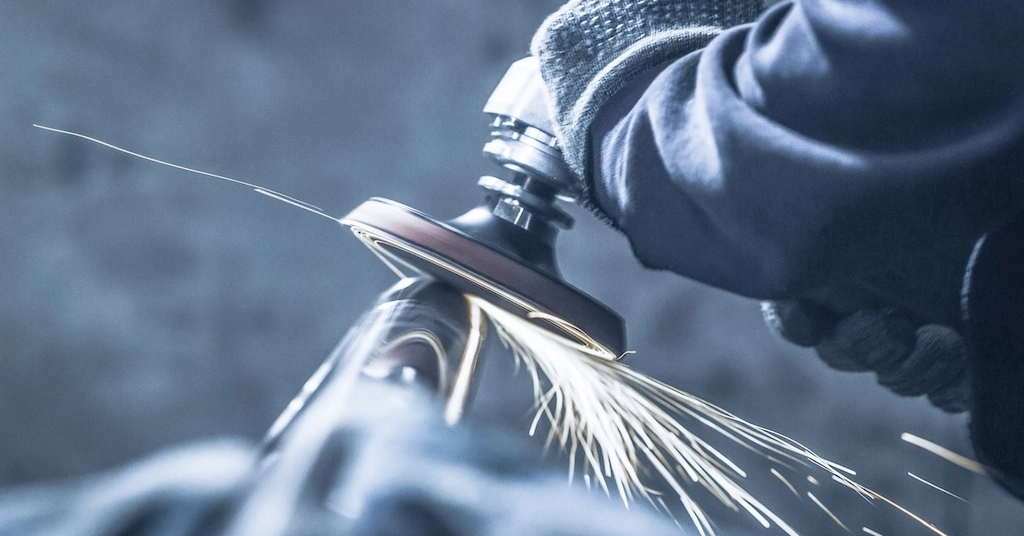
1. Metal Surface Cleaning
The first step is surface cleaning. The substrate is thoroughly cleaned with pure water or sometimes acid cleansing to remove debris, oils, and other contamination. Although cleaning does not seem important, it greatly impacts the final result’s uniform polish and overall quality. Furthermore, a clean surface also helps to decide which abrasive or grit will be needed to achieve the desired smoothness.
2. Surface Grinding
After cleaning, grinding is applied to the surface to quickly remove significant surface defects, such as deep scratches, pits, machined marks, and attached chips. Typically, abrasive wheels are used for grinding metal surfaces. The abrasive grains of the wheel cut out the minor materials and prepare the surface for subsequent operations.
| Type of Major Imperfection | Suitable Abrasive | Grain Size |
| Deep Scratches | Aluminum Oxide, Silicone Carbide | Coarse (24-60 grit) |
| Pitting | Aluminum Oxide or Silicone Carbide | Medium (60-120 grit) |
| Oxidation (Rust) | Aluminum Oxide or Ceramic Abrasives | Coarse (24-60 grit) |
| Scaling | Silicon Carbide | Coarse (24-60 grit) |
| General Surface Roughness | Aluminum Oxide or Silicon Carbide | Fine (80-120 grit) |
3. Surface Smoothing
Next, finer abrasives are applied to reduce the ground surface’s roughness level further. For example, sandpaper with a grit number of 180-220, finer wheels, or pads. These fine abrasives further cut the peak material created by the coarse grinding wheel. This step reduces the irregularities and all the minor defects from the surface and makes the foundation for high-polish finishing.
4. Buffing
Buffing follows the grinding and smoothing stages and involves soft materials combined with acceptable abrasive compounds to polish the metal surface. Typically, a buffing wheel with wonderful grains is used for the
surface buffing. For example, tripoli (brown rouge) is used for initial cuts, and green rouge is used for final polishing.
Subsequently, buffers and buffing wheels are two valuable metal polishing tools. Depending on the requirements or size of the metal substrate, they can be manual or automatic.
5. Final Cleaning
The last step involves cleaning the polished metal to remove any residual compounds and debris left from buffing. Typically, it is done by wiping the metal with a clean, soft cloth and using a mild cleaning solution that does not react with the metal.
Which Metals Can Be Polished?
Various metals and alloys can be polished using suitable metal polishing compounds. However, polishing effect and quality can vary depending on the mechanical properties of a particular metal or alloy. For example, metal with lower hardness shows better results.
The compatible metals for surface polishing are Steel, Aluminum, Nickel, Copper, Titanium, Silver, Platinum, etc. Let’s elaborate on some of these in brief;
1. Stainless steel polishing
Polished stainless steel parts
Stainless steel parts and products can achieve Gloss, Matte, Reflective, or Mirror surfaces with metal polishing. It is the best way to improve the life of parts, as stainless steel polishing significantly reduces corrosion resistance.
All the other steps are similar( cleaning, grinding, and smoothing) except for some special considerations in the buffing process. The buffing might require the fine grains to be as high as 2000 grit.
Application Examples;
- Sleek and modern appearance for kitchenwares
- High gloss finish for automotive steel components like exhaust tips or grilles
- Medical settings, like scalpels, forceps, and other surgical tools
- Food processing tanks, piping, and large cooking vessels
2. Aluminum Polishing
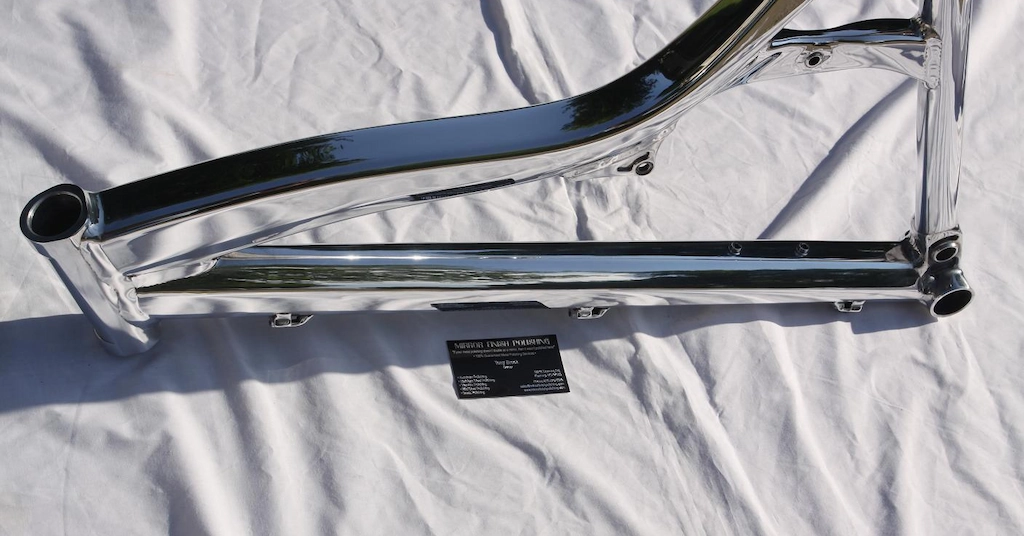
Mirror-polish on aluminum part
The porosity of aluminum causes the risk of rapid surface wear and degradation over time; polishing can address this problem effectively. The aluminum polishing can produce a mirror-like finish with a surface roughness value (Ra) as low as 0.8 μm.
Consequently, Blue Rouge and Tripoli are the two best aluminum polishing compounds. They are used in the finer form with a typical grit number range of 600 to 800, even up to 1500, based on requirements.
Some applications of aluminum polishing are;
- Automotive components such as rims, bumpers, and trims.
- Marine hardware like mastheads, railings, and hulls.
- Architectural features, including door handles, frames, and railings.
3. Copper Polishing
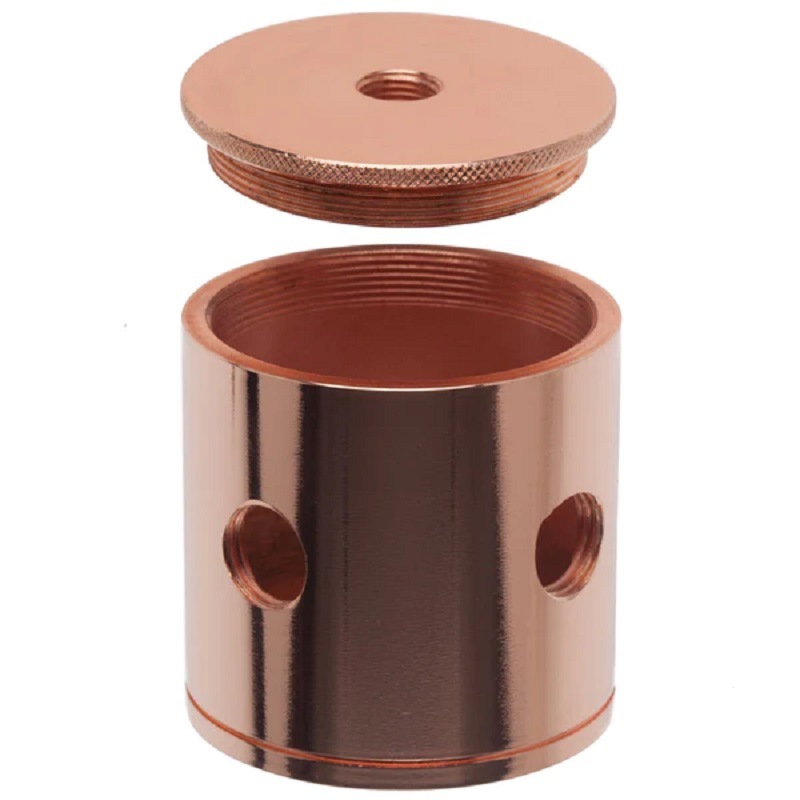
Polished copper part
Copper loses its shiny luster appearance when exposed to air due to oxidation. Therefore, copper polishing is important to improve and maintain the original aesthetic over time. Since it is a relatively soft metal, the range of abrasive’s grain size is 360 to 1200 grit sandpaper.
Next, Brasso and Wright’s copper cream are two important metal polishing compounds for copper. Meanwhile, you can also polish the copper at home with lemon juice and baking soda.
Application Examples;
- Decorative items like copper vases, candle holders, and plates
- Plumbing fixtures and architectural items
- Jewelry
- Components of medical instruments
4. Titanium Polishing
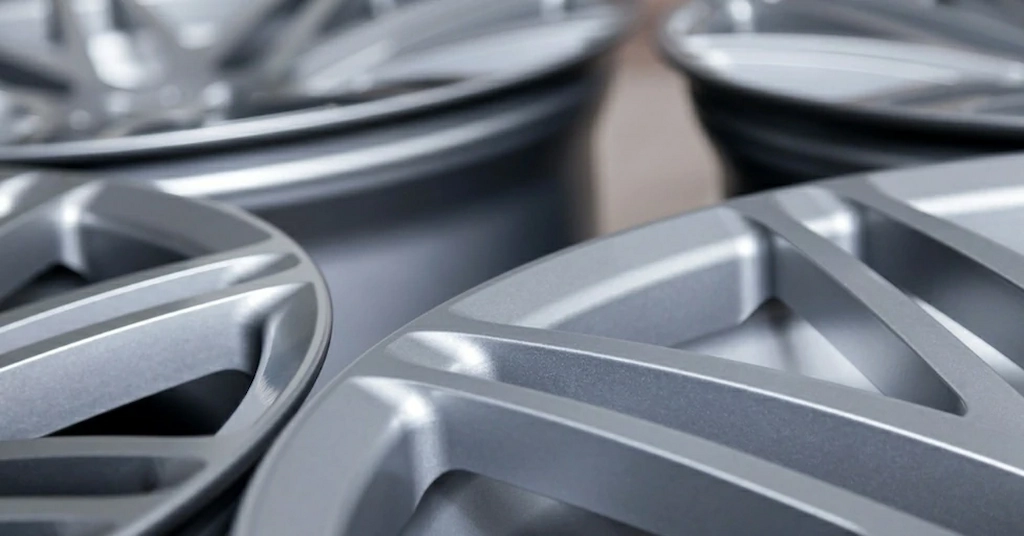
Polished titanium
Along with appearance, titanium polishing improves corrosion resistance, sterilization, and surface friction. To Polish titanium, you need to progressively use abrasives from coarse to finer. Meanwhile, the grit number of abrasive ranges from 200 to 2000, depending on the surface situational and desired Ra value.
Some of the application examples of titanium polishing are;
- Polishing of aircraft’s turbine blades, engine parts, and structural elements made from titanium.
- Medical implants such as knee replacements.
- Automotive components like connecting rods and valves
- Jewelry and watches
Try Prolean Now!
Advantages of Metal Polishing
- Surface Polishing of metal parts gives a shiny, mirror-like finish that significantly enhances the visual appeal.
- A polished surface provides resistance to rust and corrosion.
- Polishing parts are easier to clean and maintain. Additionally, they are less likely to harbor dirt, grime, and bacteria. It is a significant benefit for medical and food-processing applications.
- It minimizes the surface degradation and increases the durability of parts & products.
- Polishing can smooth out microscopic roughness, reducing surface friction. This is beneficial for parts that move or slide against each other.
- The polishing method is a solid foundation for further surface treatments like painting or coating.
Disadvantages of Metal Polishing
- The process is time-consuming for complex parts and components.
- Polishing intricate metal parts, like complex machinery components, can be highly time-consuming, impacting production timelines.
- Polishing could be more expensive than another finishing process due to repetitive surface treatments with different sizes of abrasives.
- Achieving uniform metal polishing requires an expert professional to handle the project.
- The use of improper metal polishing compounds can introduce micro-scratches.
Applications of Metal Polishing
Metal polishing is critical in various industries, from aerospace to tooling and Die Polishing. Polishing creates a smooth, reflective finish through the removal of imperfections. Moreover, this process is indispensable where cleanliness, precision, and appearance are paramount.
Table: Metal Polishing Applications
| Industry/Application | Examples of Polished Metal Components |
| Automotive | Wheels, bumpers, exhausts, trim, engine parts, etc. |
| Aerospace Components | Turbine blades, engine parts, fuselage trim, cockpit instruments. |
| Medical | Surgical instruments, implants, prosthetics, and medical tools. |
| Electronics | Smartphone cases, laptop hinges, camera components, etc. |
| Marine Equipment | Deck fittings, hull trim, anchor chains, navigational tools, and more. |
| Musical Instruments | Brass instruments, drum hardware, flutes, guitar hardware |
| Firearms Manufacturing | Gun barrels, triggers, decorative engravings |
| Art and Sculpture | Metal sculptures, decorative panels, art installations |
| Watchmaking | Watch cases, bands, crowns, dials |
Surface Polishing Services for Metal Parts at ProleanTech
ProleanTech is a China-based manufacturing company with advanced facilities of on-demand manufacturing and surface finishing services. We have a decade of experience in the surface Polishing service niche. Our engineers can handle all complex parts or products and polish them exactly under specified requirements.
- Client-centric approach
- Affordable pricing
- 50+ Metal & alloys
- Rapid turnaround
- Experience working with industries globally
We provide polishing 50+ Metal & Alloys, including steel, nickel, titanium, aluminum, brass, copper, and many more. So, whatever your application, send us your design for high-quality polished metal parts and components.
Try Prolean Now!
Conclusion
The polishing of metal & alloy components not only provides an eye-catching appearance, it is essential for functionality in applications requiring a low-friction surface and excellent smoothness. Therefore, Metal polishing is used in diverse industrial consumer items. The stated result is impossible without proper polishing compound and abrasive grain size.
Overall, surface polishing can be an effective finishing strategy for any metals or intricate shape if the requirements are a mirror-like finish with Roughness ( Ra) value as low as 1 μm.
FAQs
What kind of surface does metal polishing create?
Metal polishing creates a smooth, reflective, mirror-like finish on metal surfaces.
Can I polish any metal or alloys?
Nearly all metals and alloys can be polished, but the techniques and outcomes vary depending on the metal’s hardness, flexibility, and desired finish.
What is the lowest achievable roughness (Ra) with metal polishing?
The lowest achievable roughness (Ra) with metal polishing can be less than 1 µm with an ultra-smooth surface.
Are Metal-polished parts durable?
Metal-polished parts are generally more durable with regular maintenance because polishing increases corrosion resistance and reduces surface defects that might lead to premature wear or failure.

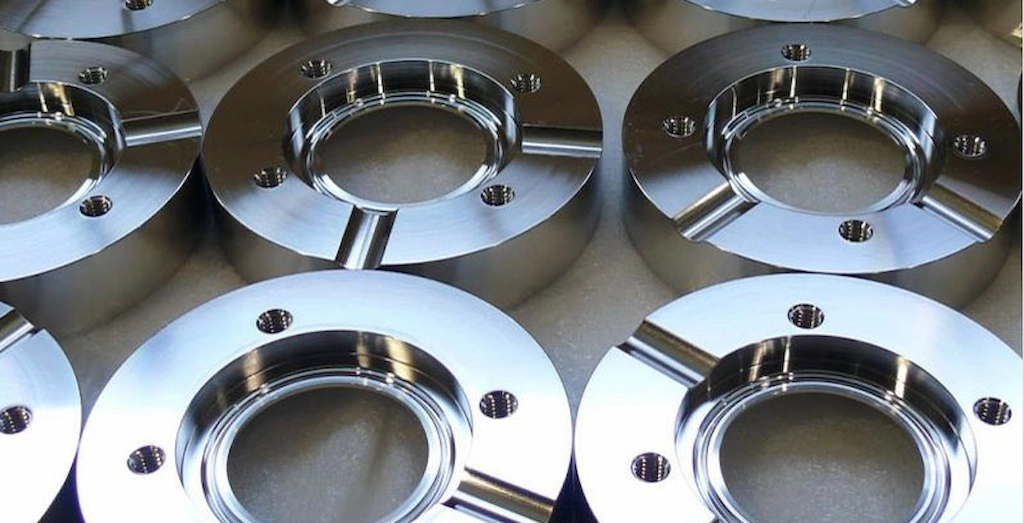
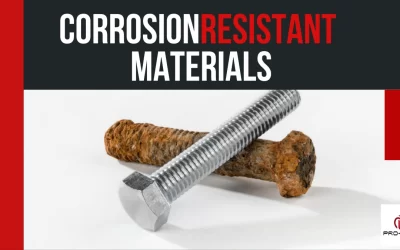
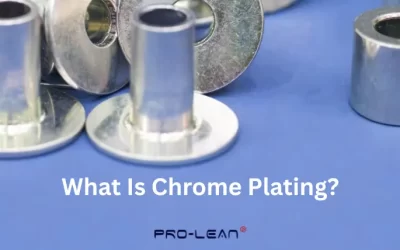
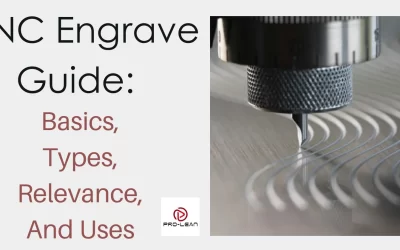
What do you think, which metal finishing techniques is suitable for titanium parts?
We are a Toronto-based company that offers food-processing plant setup services to all parts of the country.
Can you provide some custom parts of stainless steel?
Yes, we can made custom milling parts with high precision for food-processing applications. You can reach out to us for more detail: https://proleantech.com/food-processing-prototypes/
Thanks for sharing. I read many of your blog posts, cool, your blog is very good.
Thank you so much!
Very informative! Can your company handle custom CNC machining for high-precision aerospace components? We’re looking for a reliable partner who can deliver tight tolerances and consistent quality on a large scale
Hello, Simon. Yes, we specialize in high-precision CNC machining for aerospace components. Our advanced machinery and skilled technicians ensure tight tolerances and consistent quality, even on large-scale orders.
Thank you for sharing this surface finishing guide, it will help me to make a custom abrasive wheel for mirror finish on my steel parts.
Thank you and wish you the best for your project! If you need any help, please let us know.